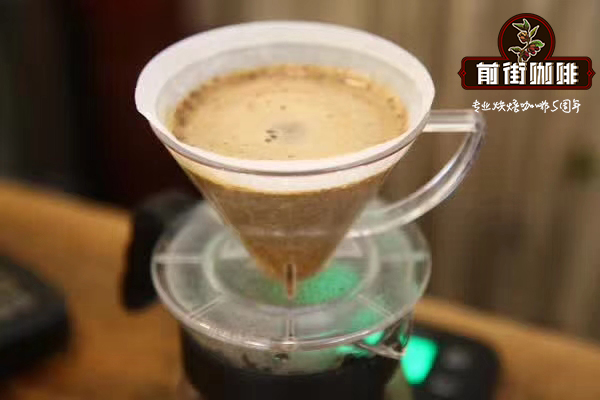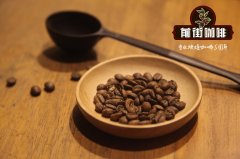Burundian boutique coffee Heart of Africa Burundian Heart of Africa Coffee introduction

Professional Coffee knowledge Exchange more information about coffee beans Please note the coffee workshop (Wechat account cafe_style)
Front Street-Burundian Heart of Africa
Burundi, the heart of Africa.
According to the statistics of the World Bank in 2011, there are about 600000-800000 families living on coffee in Burundi, and coffee is the core of Burundi.
Burundi is a very beautiful country in the interior. It is located on a steep rift valley with a rough topography. The mountain ridge that suddenly rises from the shores of Lake Tanzania is the watershed between the Nippon River system and the Kugo River system, which is known as the "Heart of Africa" symbol. Through the introduction of the Belgian people, the "Heart of Africa" in Burundi began to grow coffee in 1930. Like Anda in other countries, coffee is mostly bourbon series. Coffee grows on mountains ranging from 1750 to 2000 meters above sea level.
The first Bloomberg Arabica coffee shop was introduced by Billy in the 1930s. To this day, more than 800,000 Bloomberg families depend on coffee for their livelihood, mostly in small-scale coffee bars, planted separately from other crops, artificial planting, and mechanized equipment. Coffee coffee is mostly made of Bourbon and Jackson and Mibirigy of the same Bourbon system, and the processing methods are water washing and semi-washing. In the past, most of them were exported to Belgium, Germany, Netherlands, Japan, Australia and the United States.
Coffee exports have become an important economic source of Burundi. Burundian coffee mainly comes from the following five major producing regions, mainly with the famous coffee producing regions such as Kayanza, Ngozi, Mumirwa, Buyenzi and Kirimiro. Burundi (Burundi) "Heart of Africa" Bloomberg's coffee production is similar to that of Yisuobi, and most of them are small ones. Farmers in the Nielu Deer Cooperatives (Nyarunasi Cooperative) send their harvested ripe fruits to the processing system for processing.
Of course, there are some other small-scale production areas, but these two regions produce the most famous coffee.
Buyenzi
The largest coffee producing area in the country is bordered by Towangda. Among them, two specific area cards, named Kayanza and fruit Ngozi, are the most famous.
The climate in Karaoke area is very warm, with an average temperature of 18 °C. most small farmers are still located between 1700 and 2000 meters, and summer is the dry season. Coffee from Cafe got a high score of 91.09 in the 2015 COE contest.
It is located in the north of Burundian Province, which is comparable to the elevation of Kashi, but its output is less than that of Karaoke. However, in recent years, it has also shown good quality. In the 2015 COE competition, its most outstanding batch scored 88.92%, and other batches in the region also scored more than 85%.
The coffee from the caramel is drying in the sun.
Kirundo, Bugesera
In the north of Burundi, its output is low, but its development capacity is not strong; when the altitude is between 1400 and 1700 meters, the best COE of this region is 86.62m.
Muyinga, Bweru
Another producing area in the north of Burundi, bordering Tanzania. The average elevation is 1800 meters above sea level and has its typical Burundian characteristics: climate, volcanic soil, high rainfall.
Gitega, Kirimiro
Located in the mountains of central Burundi, the average Celsius is 12-18 °C. The annual rainfall is 1100pp, lower than that of other producing areas.
In addition to COE coffee, there is also a professional coffee laboratory in this region, which is responsible for monitoring and controlling the export of coffee products.
Bubanza, Mumirwa
Located in the north of Burundi and bordering the Democratic Republic of Tanzania, it is 1100-2000 meters above sea level, with an average Celsius of 12-18 °C and annual rainfall of 1100pp.
02 | processing method
"Heart of Africa" in Burundi
In the production area of Reuters, the coffee production type of Bloomberg is similar to that of Yeso, and most of them are produced in small ones, and the ripe fruits harvested by them are sent to the processing system for processing. This batch of Reuters coffee producers, a cooperative organized by family-like coffee farmers, has a total of 539 coffee farmers, of whom 148 are women. on average, each family has 10, 200 coffee shops (at least 1000 coffee bars can be planted in a public noodle). It can be seen that its annual income is weak, and it is also a typical poor coffee shop family.
Coffee harvested by small farmers is washed and processed with traditional water. After the fruit is removed, the coffee is soaked and washed in a sink, and it is placed on the scaffolding to be dried every day.
Like other African countries, Burundian coffee has its own special method of processing, that is, heavy washing (or heavy fermentation). Coffee processed in this way will have a grateful taste and bright flavor.
Coffee beans are almost full of defective beans, the size is equal to the water content, and after roasting with high maturity, the bean noodles show a bright baking color, the taste is wild, and retain a strong flavor and aroma. The fragrance is different from most sweet and mild coffee in the market, and it has a very high flavor in Asia. The fragrance of dried scented oysters is stronger than that of Ken, and you can feel very melancholy at the entrance, like vanilla, wild, dark coffee, low acidity, slightly lighter than Ken, and the rest is lighter than beans. it has the inherent characteristics of non-beans, and it is also quite special.
03 | Analysis of raw beans
Generally speaking, Burundian coffee is mainly bourbon, and there are some other varieties (such as Jackson and Mount Langshan), while its planting varies from 700 to 2700 meters above sea level, which produces brighter sour and lemon flavors at high altitudes, with flavors of passion fruit, spinach, flowers and honey, which can reach a SCA score of more than 86, while low-altitude coffee is thinner and has more chocolate and hazelnut flavors.
Production area: Bubanza
Variety: Bourbon bourbon
Altitude: 1400 m to 1700 m
Soil: volcanic loess
Level: AA level
Treatment: washing
Harvest period: March to August
Taste: honey, kumquat, purple mackerel flowers, acidity, smooth taste, fragrant and long-lasting tails.
END
Important Notice :
前街咖啡 FrontStreet Coffee has moved to new addredd:
FrontStreet Coffee Address: 315,Donghua East Road,GuangZhou
Tel:020 38364473
- Prev

Cosmopolitan Coffee Coffee Coffee
Professional Coffee knowledge Exchange more Coffee Bean Information Note Coffee Workshop (Wechat account cafe_style) Front Street-Coffee is the country where coffee was first introduced to Central America and has a long history. the coffee organization has been produced and sold in a complete system. Because Costa Rica is located in Central America, there is light and the nature of the land.
- Next

Kenny Neri Fine Coffee Kenny Neri Fine Coffee Co-operative Day
Professional coffee knowledge exchange more coffee bean information please follow Coffee Workshop (Wechat official account cafe_style) Front Street-Kenyan Trade Co-operative Kenya Othaya FCS Chinga Factory Natural Kenny Neri processing method: Japanese altitude: 1700-1950 meters above sea level: SL28, SL34 level: AA production area
Related
- A complete list of coffee bean names and their meanings! What is Yejia Shefi coffee? Where is Mantelin coffee?
- What grade does Arida Manor Kaduai coffee beans belong to? What treatment is Arida ASD slow anaerobic sun exposure?
- The milk tea cup becomes smaller?! Overlord Tea Girl launches a new "Return to Yunnan" series
- Accused of selling counterfeit and high-priced coffee beans! Well-known boutique coffee brand "Oukelao" bowed and apologized!
- How to make espresso dumplings? Can I eat coffee and glutinous rice balls together?
- Save the unformed and stagnant powder cakes in one second! What is the problem with stagnant water in the powder bowl of the espresso machine?
- What does hand-brewed coffee stop mean? Why is it not recommended to make coffee by hand?
- Is it normal to smell like coffee? Why does coffee smell like alcohol? What's wrong with the strong smell of cold extract ice dripping ice brewed coffee?
- How to solve the problem that hand-brewed coffee extraction takes too long? Why is the water flowing so slowly when making coffee?
- The main points of making Australian white coffee, the proportion details, how does Australian white properly foam and blend the flowers?

